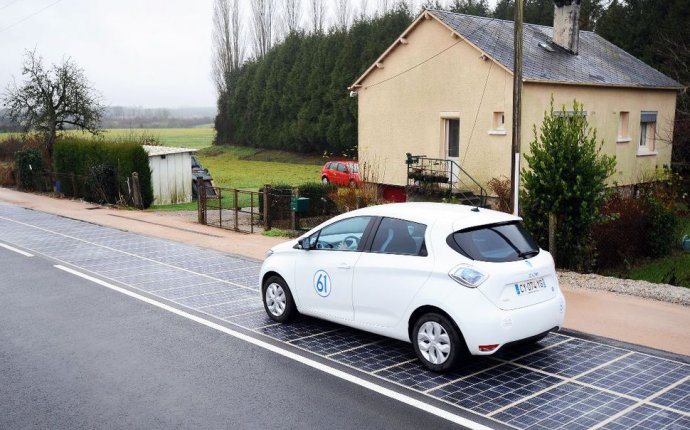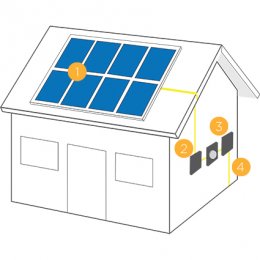
Basics of solar Panels
 Solar power captures radiant light and heat from the sun and converts it into clean energy that can be used to power homes, businesses and machinery.
Solar power captures radiant light and heat from the sun and converts it into clean energy that can be used to power homes, businesses and machinery.
This renewable energy source, first used commercially more than 100 years ago, is growing rapidly as people look for sources of energy that are sustainable and environmentally sound both in industrial nations like the United States and third world countries that need to power growth. In fact, solar power is expected to become the world’s biggest source of electricity by 2050, according to the International Energy Agency.
Take a drive through Southern California or other areas that get a lot of sunshine and you will see how popular solar power is. On any major road, you will undoubtedly see houses, parking structures, schools, highway signs, and stores that have added solar panels to harness solar energy for electrical appliances, air conditioning, lighting, water heaters and other purposes. And more solar panels go up daily as people realize the cost-efficiency and clean nature of solar energy.
Solar energy is reliable and efficient, producing electricity during peak periods — hot afternoons — when the demand is highest and air conditioners are going full blast. On highways, the sun’s energy is captured during the day to enable highway signs to shine at night.
Types of solar power
There are three basic types of solar power system designs that you can use in homes and businesses: Passive solar energy, active solar energy and solar thermal energy.
Passive solar energy involves orienting a building to optimize sun exposure. Then, passive solar power systems are built right into walls, windows and skylights to take advantage of the sun’s heat. They do not use outside materials to capture and disperse light within the structure. Passive solar energy requires designing buildings from the blueprint phase (or at least by developing detailed plans for any major overhauls) that maximize energy use without external mechanisms. Installation of glazed windows and building overhangs are some common examples of passive solar design.
Active solar power is much more common. An active solar energy system uses a mechanism, such as solar panels on a roof, to capture sunlight and generate power. These systems involve installing panels, wiring and other materials to harness the sun’s energy to power electric systems.
Solar thermal energy involves using the sun’s radiation to heat water and is a great way to reduce your water-heating bills and keep your pool heated.
How do solar panels work?
Active solar power is what you are most likely to install to cut your energy costs and usage. There are five basic parts to the process of actively harnessing solar energy for everyday use:
Solar panels, made up of photovoltaic (PV) cells, capture sunlight particles or photons. Using a semiconducting material such as silicon, the PV cells convert the sunlight into useable direct current (DC) electricity.
An inverter connected by wires to the solar panels turns those direct currents (DC) into alternating current (AC) electricity on a much grander scale than the AC/DC plug on your small appliance.
The AC goes to the electrical or breaker box panel in your home or business to power the lights, computers and other appliances.
The utility company meter at your home or business will measure how much energy is used, and how much is generated by the solar panels. This will tell you whether your system is generating enough energy from solar power to fully meet your needs or whether you are still taking some power from the electric grid.
“Grid-tie” solar power customers tie their solar system into the local utility’s power grid, which allows them to sell any excess energy they generate into the grid for others to use. Others prefer to set up a stand-alone solar power system, keeping their homes “off-grid” and generating power solely for their own use.
Considerations in installing solar power
The use of solar energy is increasing dramatically as people look for ways to cut energy costs, reduce their use of fossil fuels and upgrade their home’s energy efficiency. In 2008, there were more than 524, 000 shipments in the U.S. of PV cells and solar energy system components; this compares with slightly more than 21, 000 shipments in 1999, according to the U.S. Energy Information Administration. By 2018, the numbers is expected to increase exponentially as more people install solar energy systems beyond the Sun Belt sections of the country.
Does solar power make as much sense in Connecticut and Massachusetts as California and Arizona? Absolutely. The desire to improve the environment and reduce energy demands has grown. But there are sound enticements for people in areas that cannot rely on sunshine 300 days a year. There are lower prices today for many components needed to install a solar system. There are also rebates or tax credits (as well as favorable interest rates) that make the return on investment worthwhile.









